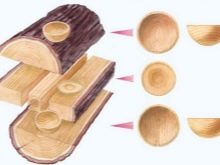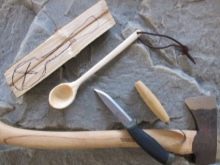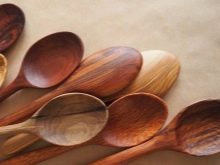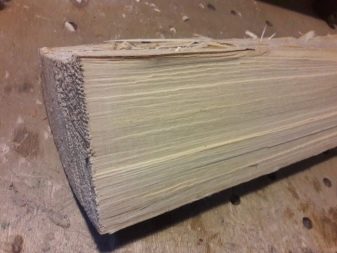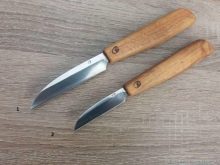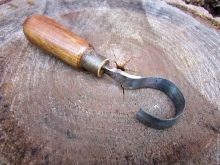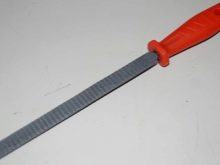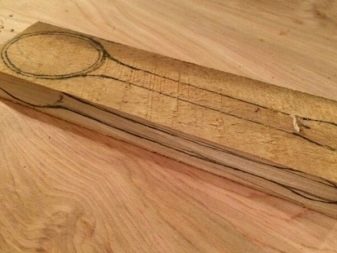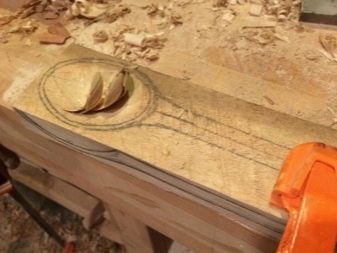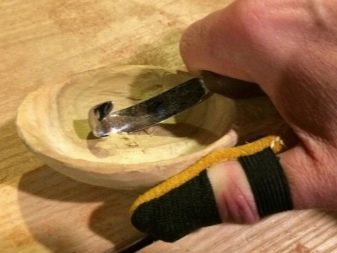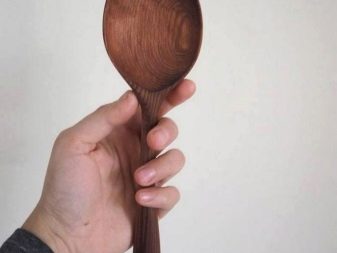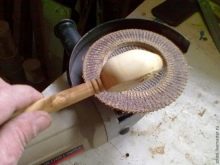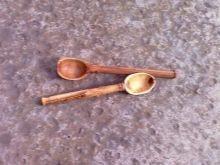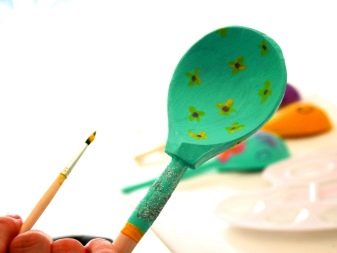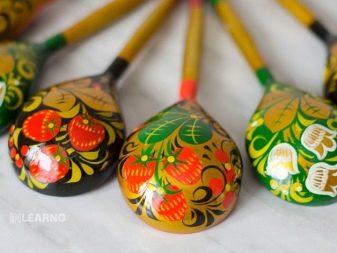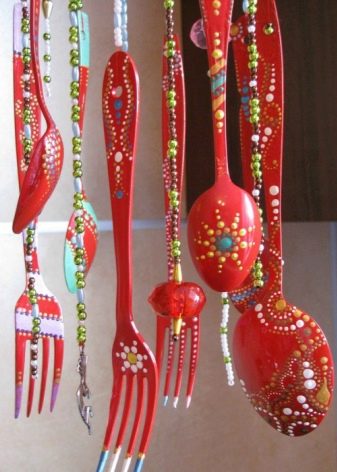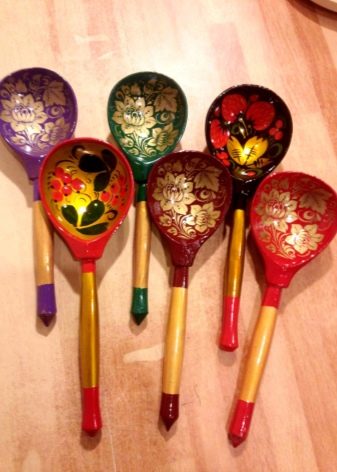Making wooden spoons is a process that cannot be called boring, unnecessary, outdated. In fact, any work with natural material, which results in a utilitarian or decorative thing, brings to its performer the pleasure of the process of creation itself. Making a wooden spoon on a lathe, processing or coloring an existing workpiece, even simply varnish (restore) the old one - all this is an interesting process even for a beginner.
What is better to do?
The beginner master is not concerned about the scale of the production of wooden utensils, but the material that is better suited for this purpose. So that the process was not a failure initially, you will need blanks of hard, but not chopped wood - aspen, maple, ash, cherry, birch, walnut. If you have not previously tried to work with a tree, take a lime. It is soft and light wood, supple even in the most skilled hands. In addition, linden does not emit tannins, products from it are not inclined to warp.
What exactly should not be processed is a pine. Coniferous trees, in principle, are not suitable for the production of dishes: this is due to the strong resinousness and strong odor. And if you remove the smell of paint from a spoon is possible, then the pine smell is stable. As blanks for food or decorative spoon, use the plates. It is possible to split the ridge into small woods.
It is more convenient to work with small plates, but it is more familiar with small poles (this is a more traditional way). The orientation of the wood fibers will form the basis of the symmetry of the spoon bowl pattern.
Tools for work
To cut a spoon, you need more than one tool. Ideally, you should have:
- knife - the best option would be Bogorodsky, it has a convenient narrow nose and double-sided sharpening;
- spoon cutter - This is a bend chisel, which is needed for scraping wood in the grooves, instead of a spoon cutter, you can take a wide cranberry;
- straight chisel - it is used for smooth cutting of solid wood from the workpiece;
- clamp - fixation tool;
- file - roughing;
- shtihel - thin steel cutter, thanks to which you can make a thread on the handle.
As you can see, this method is designed to make your own spoons at home. If you do not have a lathe, but have the tools described above, you can gradually cut out a spoon.
Progress
Using the template, transfer the two types of drawing (top and side) to a wooden blank. Watch the orientation of wood fibers - it should be longitudinal. Fix the workpiece clamp, begin to form a rough bowl. Further step by step actions such.
- Use a chopper to choose wood in the direction of the fibers. Having deepened a bowl, do not forget that it is necessary to leave an allowance on thickness for the subsequent polishing and cutting.
- After the formation of the grooves, proceed to cut off the excess array in the vertical and horizontal plane, focusing on the top and side contour. For this purpose, use a jigsaw or band saw, but the work can be done with a chisel or hacksaw.
- Next, take the Bogorodsky knife, with which the convex part of the spoon is decanted. Thanks to the wide chisel, the cup can be shaped into a perfect evenness. Knife and chisel handle the shape of the handle.
- With the help of a spoon cutter, a fine trimming is performed, aligning its edges.
- Grinding, as the final stage, is performed in 2-3 approaches (do not forget to lower the grain of the abrasive every time).
Spoon is ready! But you can not use it yet. To make it suitable for food, the spoon is impregnated with special compounds, dried.
Turning on a lathe
The process begins in the same type - drawing two profiles of the spoon on the template. Then on a band saw, sawing out of baklushi, i.e., rough preparation of a spoon, is carried out. On a tape machine, you can immediately cut out the teeth for the handle, they are utilitarian - they can be fixed to the edge of the dish.
After this rough work ends, thin begins. Now the stationery knife is taken and with its help the product acquires smooth forms. A boring machine with rasp cutters helps round out bends and edges. Part of the surface is easily smoothed on a grinding machine (if you, of course, know how to work with it).
For the selection of the bowl, you still need a regular chisel or, alternatively, a mallet. They first cut down the rough contour, then it is corrected by small semicircular chisels. The bottom is aligned rasp burrs.
Grinding left: first in the course is coarse sandpaper, then fine sandpaper. Completes the process of processing spoons protective composition. Well and of course decorating - You can gracefully paint a spoon, decorate it with polymer clay decor, make a family amulet from it, etc.
Protective composition
The old ways of imparting water repellency to a tree are impregnation with wax or oil. Try to choose for this purpose natural ingredients without different chemical additives. And even more so you do not need varnish, if you use the spoon as a dish. What impregnations can be taken:
- tung oil - slowly drying oil with deep wood impregnation, with protective properties close to varnish;
- linseed oil - dries slowly, affordable and relatively cheap;
- mineral petroleum jelly - non-drying, it is washed out from the surface quickly, but quickly and processed again;
- beeswax or carnauba wax - not the best option, but acceptable.
This can finish the work: the continued use of a spoon at the discretion of the manufacturer.
The painting process
The most common option for decorative processing spoons - painting. Even young children in the garden are taught how to paint a paper spoon template, or give them to cut a paper blank to simulate carving. If the spoon is purely decorative, and contact with moisture does not threaten it, for painting can use tempera or colored gouache. Such paints are easy to use, they do not require pre-priming of the surface.
But if you intend to organize painting the spoon with oil paints, a primer is necessary: this is done in 2-3 steps. The primer is easy to do yourself: one part gelatin (you can take dry carpenter's glue instead), 5 parts of tooth powder. A teaspoon of the composition in a glass of water - and the primer is ready.
The painting is done with small brushes, no more than 6, the best option is squirrel. The drawing should not be impromptu unless you are a master. Draw a sketch in advance, transfer it to a spoon. Apply the paint in one go! Patterns can be simple, and can make a more elegant fine work. But for this, a sketch in color must first be done on paper: the hand will be trained, and already on the spoon itself you will be able to apply a complex pattern without errors from the first time.
Decorative composition of spoons
Make a convenient lampshade material. This may be a plastic or metal blank, which is made out of tape or lace. In the form of a lampshade, it will be convenient for hanging. Along the perimeter of the lampshade on beautiful ropes or fishing line with stringed beads will hang painted spoons. A company they can make painted wooden forks.
Decorate spoons and forks in one color - for example, red. For registration, use a nice dot painting. Cover the product with varnish and, waiting for it to dry, fasten on the fishing line / braid. For fixing in the spoons and forks, holes must be made in the handle.
You will have a beautiful, unusual composition. Hang the shade for twine or strong yarn (whatever you want, as long as it looks aesthetically and stylistically convincing). This composition-charm can hang anywhere: above the dining table, in the hallway, the working area of the kitchen.
A wooden spoon, self-made and painted, is a great gift for your friends for some not very grandiose reason, but from the heart, with your own hands and with the preservation of traditions.
How to make a wooden spoon, see the following video.

